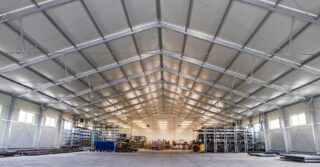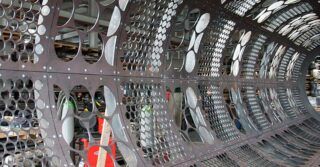The correct selection of a gantry crane is a challenge that requires considerable knowledge and experience, especially for structural engineers and architects. In order to create a reliable project for industrial production facilities, it is necessary to go through several steps – analysing available solutions, reviewing product catalogues, and considering various complex structural and technical factors. The new tool, Konecranes Crane Planner, greatly simplifies and speeds up this process.
From now on, architects, industrial designers and steelwork fabricators have free access to a large amount of data on cranes and Konecranes’ electronic lifting equipment catalogue through the Crane Planner platform. This user-friendly online tool provides a rich source of data for selecting the right cranes, as well as information on the space requirements for their installation and technical specifications.
So whether you are designing a new factory, expanding an existing factory or warehouse, the new Konecranes Crane Planner tool will help you save time and avoid unnecessary costs while minimising the time needed to design a crane. The Crane Planner platform makes it incredibly easy to create architectural projects that are compatible with the spatial conditions in a given hall, including the working area required for crane installation.
Crane Planner allows you to quickly determine the technical parameters of the bridge crane, browse and compare projects with access to over 1000 pre-designed cranes with 2D and 3D drawings, and provide instructions and operating procedures for the equipment. All these elements have an invaluable impact on the safety of crane operation by operators during daily lifting operations.
Konecranes Crane Planner – easy crane selection The Crane Planner tool, introduced by Konecranes in response to the needs of structural engineers and architects, greatly simplifies the previously multi-step and technically complex crane design process. It is a highly functional and user-friendly tool that provides:
- 2D and 3D drawings with load capacities and technical parameters of the crane,
- Online access to over 1000 pre-designed cranes,
- Unique added value in the form of technical consultations with Konecranes experts in the field of cranes,
- Facilitation of collaboration between construction teams and designers,
- A collection of brochures and information on similar projects,
- Crane optimization and construction process,
- Efficient use of designers’ working time.
What should be considered when designing a crane? First and foremost, the intended use of the crane and its integration with other lifting systems should be considered. These are aspects that need to be considered at a very early stage in the design of future installations. Both factors have a direct impact on cost efficiency. Inappropriate space allocation and restricted or impractical crane positioning can result in operators working in potentially hazardous areas, with serious health and safety implications.
Similarly, choosing the wrong type of crane and its components can negatively affect the overall efficiency of the investment. Konecranes’ Crane Planner tool, together with the ability to consult with crane experts, can provide significant assistance in avoiding these types of mistakes.
The video below shows how easy it is to use the Konecranes Crane Planner tool.








![Methane emissions remains elusive challenge for oil and gas industry [REPORT] Methane emissions remains elusive challenge for oil and gas industry [REPORT]](https://industryinsider.eu/wp-content/uploads/xMethane-emissions-by-source-320x167.jpg.pagespeed.ic.q-7jG2luXb.jpg)